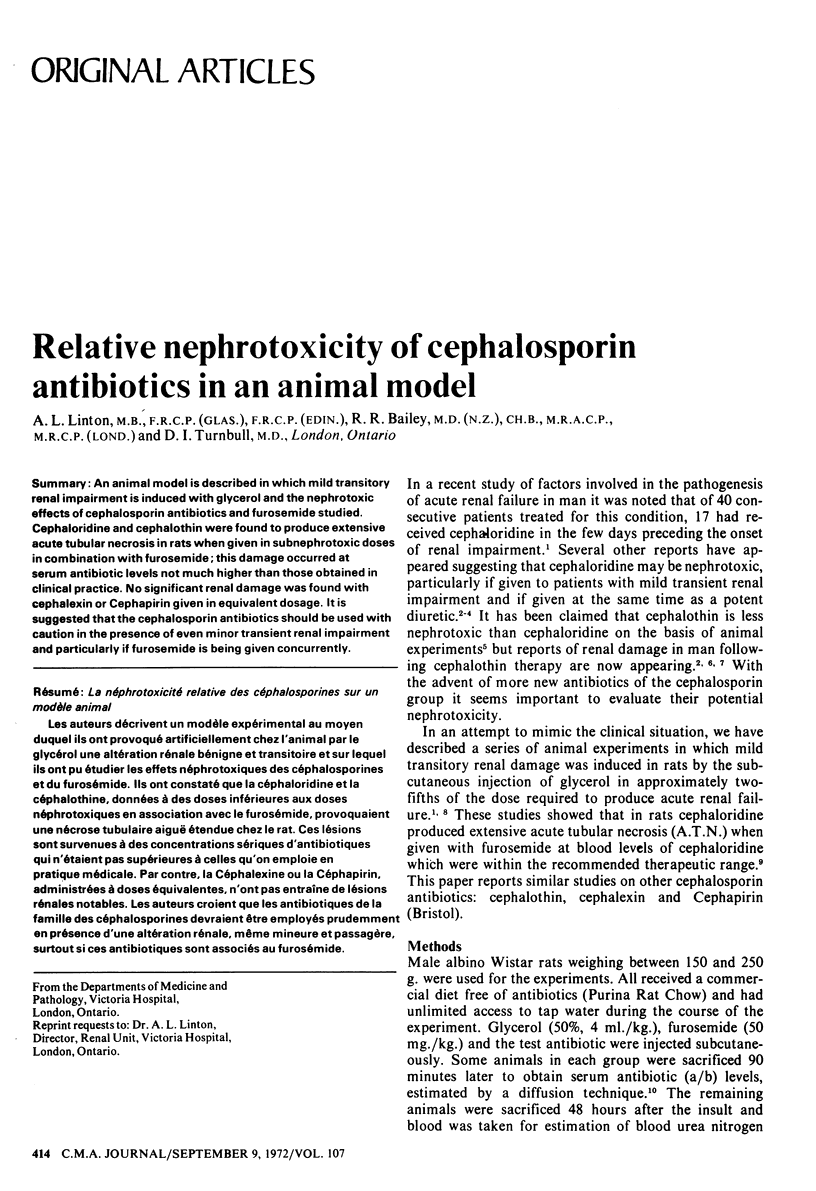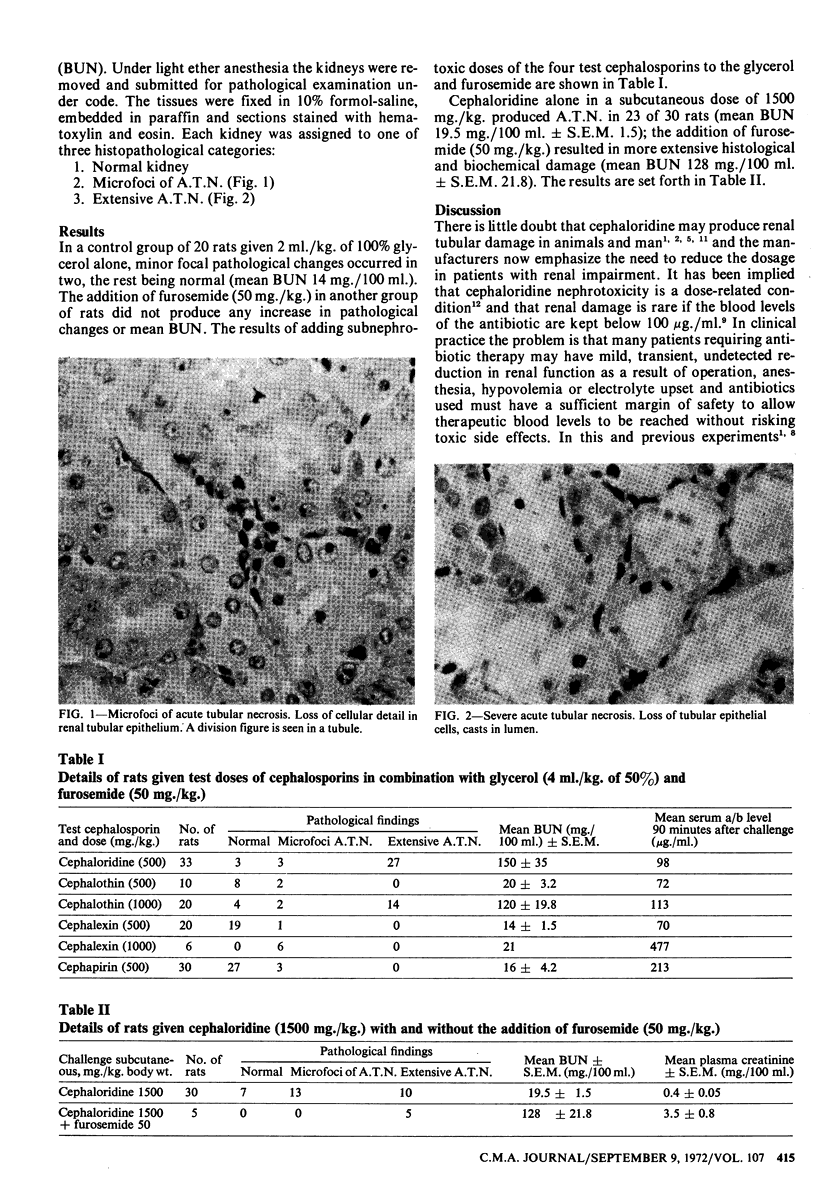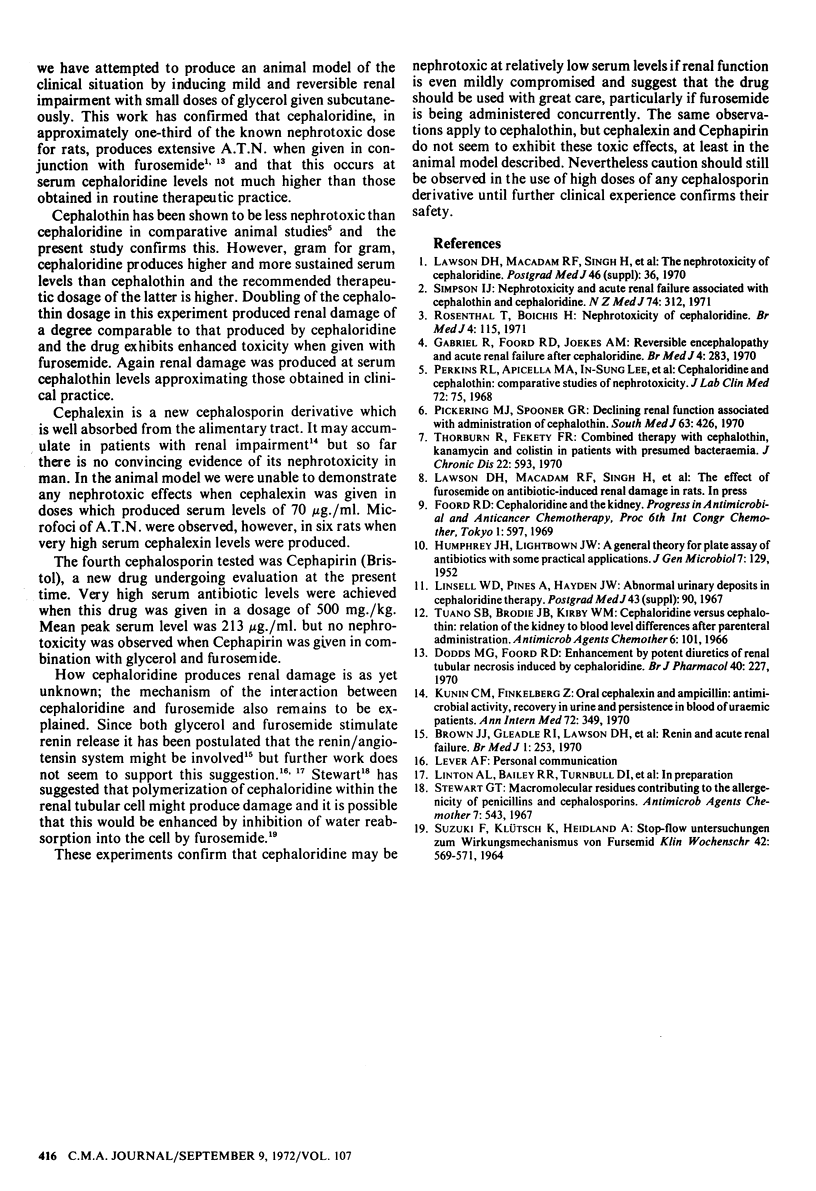Abstract
An animal model is described in which mild transitory renal impairment is induced with glycerol and the nephrotoxic effects of cephalosporin antibiotics and furosemide studied. Cephaloridine and cephalothin were found to produce extensive acute tubular necrosis in rats when given in subnephrotoxic doses in combination with furosemide; this damage occurred at serum antibiotic levels not much higher than those obtained in clinical practice. No significant renal damage was found with cephalexin or Cephapirin given in equivalent dosage. It is suggested that the cephalosporin antibiotics should be used with caution in the presence of even minor transient renal impairment and particularly if furosemide is being given concurrently.
Full text
PDF


Images in this article
Selected References
These references are in PubMed. This may not be the complete list of references from this article.
- Brown J. J., Gleadle R. I., Lawson D. H., Lever A. F., Linton A. L., Macadam R. F., Prentice E., Tree M., Robertson J. I. Renin and acute renal failure: studies in man. Br Med J. 1970 Jan 31;1(5691):253–258. doi: 10.1136/bmj.1.5691.253. [DOI] [PMC free article] [PubMed] [Google Scholar]
- Dodds M. G., Foord R. D. Enhancement by potent diuretics of renal tubular necrosis induced by cephaloridine. Br J Pharmacol. 1970 Oct;40(2):227–236. doi: 10.1111/j.1476-5381.1970.tb09916.x. [DOI] [PMC free article] [PubMed] [Google Scholar]
- HUMPHREY J. H., LIGHTBOWN J. W. A general theory for plate assay of antibiotics with some practical applications. J Gen Microbiol. 1952 Aug;7(1-2):129–143. doi: 10.1099/00221287-7-1-2-129. [DOI] [PubMed] [Google Scholar]
- Kunin C. M., Finkelberg Z. Oral cephalexin and ampicillin: antimicrobial activity, recovery in urine, and persistence in blood of uremic patients. Ann Intern Med. 1970 Mar;72(3):349–356. doi: 10.7326/0003-4819-72-3-349. [DOI] [PubMed] [Google Scholar]
- Perkins R. L., Apicella M. A., Lee I. S., Cuppage F. E., Saslaw S. Cephaloridine and cephalothin: comparative studies of potential nephrotoxicity. J Lab Clin Med. 1968 Jan;71(1):75–84. [PubMed] [Google Scholar]
- Pickering M. J., Spooner G. R., de Quesada A., Cade J. R. Declining renal function associated with administration of cephalothin. South Med J. 1970 Apr;63(4):426–428. doi: 10.1097/00007611-197004000-00020. [DOI] [PubMed] [Google Scholar]
- SUZUKI F., KLUETSCH K., HEIDLAND A. STOP-FLOW-UNTERSUCHUNGEN ZUM WIRKUNGSMECHANISMUS VON FURSEMID. Klin Wochenschr. 1964 Jun 15;42:569–571. doi: 10.1007/BF01487784. [DOI] [PubMed] [Google Scholar]
- Simpson I. J. Nephrotoxicity and acute renal failure associated with cephalothin and cephaloridine. N Z Med J. 1971 Nov;74(474):312–315. [PubMed] [Google Scholar]
- Stewart G. T. Macromolecular residues contributing to the allergenicity of penicillins and cephalosporins. Antimicrob Agents Chemother (Bethesda) 1967;7:543–549. doi: 10.1128/AAC.7.5.543. [DOI] [PubMed] [Google Scholar]
- Thoburn R., Fekety F. R., Jr Combined therapy with cephalothin, kanamycin a colistin in patients with presumed bacteremia. J Chronic Dis. 1970 Feb;22(8):593–601. doi: 10.1016/0021-9681(70)90035-4. [DOI] [PubMed] [Google Scholar]
- Tuano S. B., Brodie J. L., Kirby W. M. Cephaloridine versus cephalothin: relation of the kidney to blood level differences after parenteral administration. Antimicrob Agents Chemother (Bethesda) 1966;6:101–106. [PubMed] [Google Scholar]




